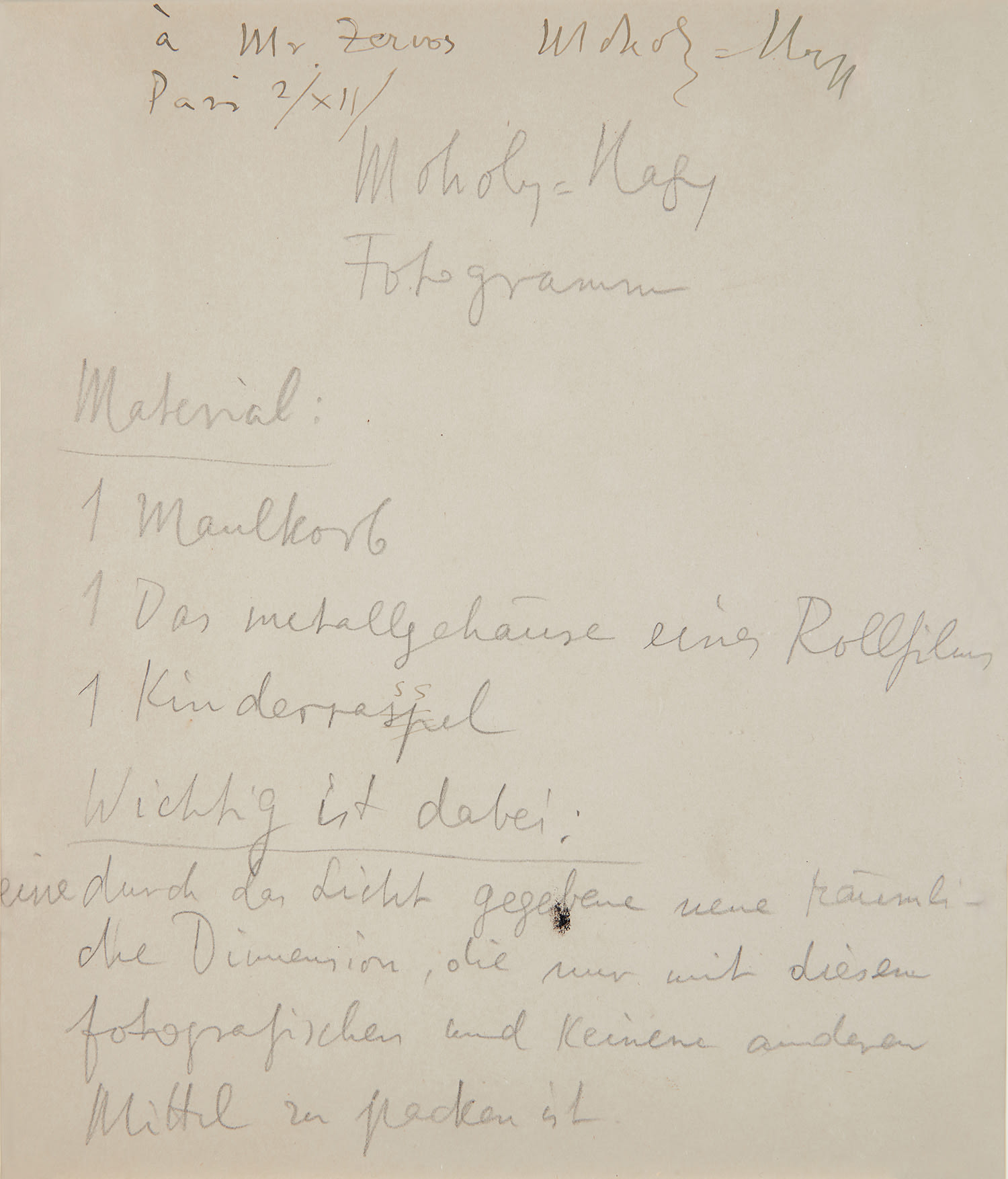





107
László Moholy-Nagy
Photogram
1920s
Unique photogram on printing-out paper or gaslight paper.
9 3/8 x 7 in. (23.8 x 17.8 cm)
Signed twice, titled 'Fotogramm,' inscribed to Christian Zervos and annotated extensively in pencil on the verso.